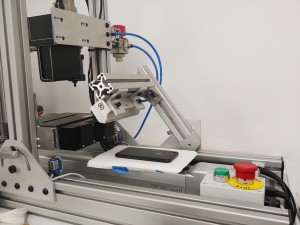
Researchers in the Niels Bohr Institute (NBI) at the University of Copenhagen, Denmark, have demonstrated that photons emitted from light sources embedded in a complex and disordered structure are able to mutually coordinate their paths through the medium.
When light spreads through a complex material composed of many disordered particles, it interacts multiple times losing its initial direction of propagation. “Imperfections lead to multiple random scattering, and the photon transport will follow the process of a random walk — just like a drunken man staggering through the city’s labyrinth of streets after a wet night at the pub,” illustrates P. David García, PhD, an NBI postdoc in the Quantum Photonics Group headed by Professor Peter Lodahl. “Multiple scattering can induce surprising correlations, which implies that while the individual path taken by the photon through the medium is fully random, different photons taking different paths are mutually dependent.”
Taking his analogy a step further, García explains that while, of course, there can be no correlation between one drunken man making it home safely and the likelihood of his fellow pub companions soundly arriving at home as well, such correlations have indeed been predicted for photons. In the past, however, only correlations that depend on universal parameters have been measured. “In our work, we have demonstrated a new type of correlations that are not universal by embedding photon sources inside a strongly disordered photonic medium,” García says. “The nonuniversality of such correlations implies that they carry out information about the microscopic details of the medium, something hidden so far in standard correlations.” The NBI researchers have exploited single quantum emitters as sensitive probes of the complex local electromagnetic environment, enabling them to extract the correlation of different propagation paths through the sample.
Drunken men lost in the night rarely coordinate with each other. Photons, on the other hand, are waves and, thus, interfere with each other when traveling through a disordered material. They can “sense” each other. “Interference is the way photons correlate with each other inside the material, giving rise to correlations outside that carry out information about the microscopic details of the system,” García explains. In other words, the new photon correlations open the possibility to extract information about the local environment of the source inside a complex material. “This is of paramount importance since this local environment determines how light is emitted. In future light-based technologies, a very careful understanding and control over the light-matter interaction will be required and our work opens a route to get such an essential insight.”
NBI’s breakthrough discovery enables scientists to study and gain insight about microscopic complex structures of disordered materials in a way that had not been possible before — by spectroscopy, brought to light through quantum dots. “Since light propagation is totally scrambled by multiple scattering, extracting information from the interior of opaque media becomes very challenging,” García says. “Our measurements open the possibility to use nonuniversal correlations between different photons to extract information about the microscopic details of the medium that are hidden in the standard correlations measured so far.”
The NBI team’s measurements show how to enhance the interaction between light and matter in a disordered material, which, according to García, is “something very important in the fields of energy harvesting, lightning or in experiments with quantum optics.”
Going forward, García and his colleagues now plan to combine their new type of measurements with other imaging techniques of opaque media to test their approach. “We want to see in practice what we can learn from complex systems with our technique that we cannot with standard techniques,” the researcher concludes.
The outcomes are detailed in the paper “Nonuniversal Intensity Correlations in a Two-Dimensional Anderson-Localizing Random Medium,” published in Physical Review Letters.























 Back to Features
Back to Features





























